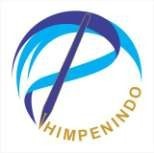Mitigasi Emisi CO2 Tanah Gambut yang Ditumbuhi Kelapa Sawit dengan Aplikasi Arang Kayu dan Tandan Kosong Kelapa Sawit
Abstract
Peatlands are developed for the cultivation of plantation crops such as oil palm. However, recently the focus on the development of peatlands for this activity has been so great, especially in relation to the emission of carbon dioxide CO2 into the atmosphere during land clearing, burning of biomass and maintenance of oil palm. The potential for peatland to be used as agricultural land must pay attention to environmental aspects such as the level of CO2 emissions to these changes. This study aims to determine the effect of wood charcoal and empty oil palm fruit bunches on CO2 emissions and their relationship to C-Mic and C/N ratios on peatlands overgrown with oil palm. This study used a randomized block design. The factors studied were the distribution of wood charcoal and empty palm fruit bunches at four levels, namely: control; wood charcoal 0.75 kg; empty palm fruit bunches 0.75 kg and empty palm fruit bunches 0.375 kg + wood charcoal 0.375 kg. Each treatment was repeated 3 times, so that 12 experimental units were obtained. The results showed that on day 0 and day 45 the addition of wood charcoal and empty palm oil bunches had no effect on CO2 emissions, but on day 15 the results showed that the treatment had an effect on CO2. emissions and soil microorganisms (C-mic). Unstable C/N ratios and value of CO2 emission increased or decreased when sampling on different days.
References
Agus, F. 2013. Konservasi tanah dan karbon untuk mitigasi perubahan iklim mendukung keberlanjutan pembangunan pertanian. Pengembangan Inovasi Pertanian 6(1), 23-33.
Agus, F., Wahyunto., Dariah, A., Runtunnuwu, E., Susanti, E., Supriatna, W. 2012. Emission reduction options for peatlands in The Kubu Raya and Pontianak Districts, West Kalimantan, Indonesia. Journal of Oil Palm Research 24(2), 1378-1387.
Gonzalez, J.M., Aranda, B. 2023. Microbial growth under limiting conditions-future perspectives. Microorganisms 11(7), 1641. https://doi.org/10.3390/microorganisms11071641
Gougoulias, C., Clark, J.M., Shaw, L.J. 2014. The role of soil microbes in the global carbon cycle: tracking the below-ground microbial processing of plant-derived carbon for manipulating carbon dynamics in agricultural systems. Journal of the Science of Food and Agriculture 94(12), 2362-2371. https://doi.org/10.1002/jsfa.6577
Guo, S., Li, Y., Wang, Y., Wang, L., Sun, Y., Liu, L. 2022. Recent advances in biochar-based adsorbents for CO2 capture. Carbon Capture Science & Technology 4, 100059. https://doi.org/10.1016/j.ccst.2022.100059
Handayani, E.P., Noordwijk, M.V., Idris, K., Sabiham, S., Djuniwati, S. 2018. The effct of various water table depth on CO2 emission at oil palm plantation on West Aceh Peat. J. Trop. Soils. 15(3), 255-260. http://dx.doi.org/10.5400/jts.2010.v15i3.255-260
Husnain, H., Wigena, I. P., Dariah, A., Marwanto, S., Setyanto, P., & Agus, F. (2014). CO2 emissions from tropical drained peat in Sumatra, Indonesia. Mitig Adapt Strateg Glob Change 19, 845-862. https://doi.org/10.1007/s11027-014-9550-y
Islam, M.U., Jiang, F., Guo, Z., Peng, X. 2021. Does biochar application improve soil aggregation? A meta-analysis. Soil and Tillage Research 209, 104926. https://doi.org/10.1016/j.still.2020.104926
Kementerian Lingkungan Hidup dan Kehutanan. 2022. Laporan Inventarisasi Gas Rumah Kaca (GRK) dan Monitoring, Pelaporan, Verifikasi (MPV) Tahun 2021. Direktorat Jendral Pengendalian Perubahan Iklim, Jakarta.
Masganti., Anwar, K., Susanti, M.A., 2017. Potensi dan pemanfaatan lahan gambut dangkal untuk pertanian. Jurnal Sumberdaya Lahan 11(1), 43-52.
Ratmini, N.P.S. 2012. Karakteristik dan pengelolaan lahan gambut untuk pengembangan pertanian. Jurnal Lahan Suboptimal 1(2), 197-206.

















